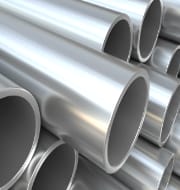Countervailing Duty on Stainless Steel Imports
In order to safeguard the interests of local manufacturers and counter the influx of cheap imports, India is considering the imposition of a countervailing duty (CVD) on stainless steel imports. The proposal, which has gained support from the steel ministry, has received a recommendation of a 19% duty from the Directorate General of Trade Remedies, a body operating under the commerce ministry.
Understanding the Countervailing Duty (CVD)
The CVD is a measure typically employed to shield local companies from the adverse effects of cheap imports that benefit from subsidies provided by exporting nations. By levying a duty on such imports, the aim is to restore a level playing field and prevent unfair competition that could harm domestic manufacturers. In the case of stainless steel imports, India seeks to counter the challenges posed by imports that have gained an advantage from substantial subsidies.
Impact on Domestic Steelmakers
The surge in cheap imports has had a detrimental effect on domestic steelmakers in India. These imports, particularly from two countries, have distorted the steel market by flooding it with subsidized products. As a result, local companies, especially smaller ones, have been compelled to put their hiring and expansion plans on hold. Instead of focusing on growth, they have been forced to navigate the role of traders in the commodity. This situation has hampered the growth and competitiveness of domestic steel manufacturers.
Reintroducing the Countervailing Duty
The decision to reintroduce the CVD comes after its removal in the Union Budget for the fiscal year 2021-22. The steel industry has long called for the reinstatement of the duty due to the continued impact of imports on small and medium enterprises. These enterprises have experienced a significant decline in their capacity, with some even facing closure. The CVD is seen as a crucial measure to help revive and stabilize these enterprises.
The Role of Russia in Steel Exports to India
While imports from China have historically been high, Russia has emerged as a notable exporter of steel to India. This shift occurred when traditional European markets imposed economic sanctions on Russia following its invasion of Ukraine. Since then, Russia’s exports to India have steadily increased, contributing to the challenges faced by domestic steelmakers.
Continued Challenges Despite Reopening of the Chinese Economy
It was expected that the reopening of the Chinese economy would ease imports from China and other countries. However, the anticipated reduction in imports has not yet materialized. Steel consumption in China and other key economies remains stressed, which has sustained the high volume of exports to India. Despite China’s post-pandemic economic growth being driven by the services sector, steel consumption has not reached desired levels.
Month: Current Affairs - June, 2023
Category: India Nation & States Current Affairs


